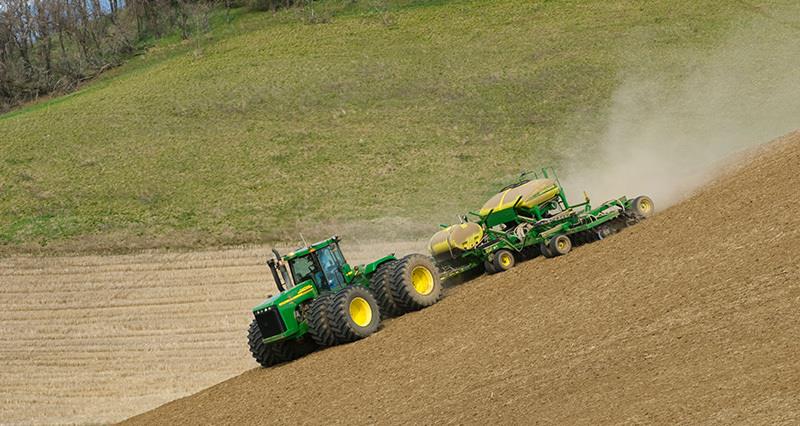There are two pieces of legislation which govern the movements of over-long, overweight and over-wide vehicles: ‘The Road Vehicles (Construction and Use) Regulations 1986’, more commonly known as the Construction & Use regulations and ‘The Road Vehicles (Authorisation of Special Types) (General) Order 2003’, more commonly referred to as STGO regulations.
Agricultural machinery and vehicles normally come under the Construction and Use regulations for abnormal vehicles.
Wide load movements
The police must be notified at least 24 hours in advance when vehicles over 3m in width are moved on road when:
- there is a speed limit of 40mph or less, or
- the length of the journey exceeds 5 miles.
The new NPCC abnormal load guidance recommends that police forces issue a dispensation to farmers and agricultural contractors for the movement of agricultural tractors, machines, trailers, and trailed appliances for agricultural purpose without the requirement to notify the movement of such equipment up to 4.1m wide without prior notification, or for reduced notification period for all other loads up to 4.3m wide.
Most forces operate an annual dispensation scheme where the relevant force is notified once with details of the vehicles concerned and areas of operation. If the police are satisfied with the information supplied, they will issue a dispensation for the rest of the year, which takes away the need for 24 hours notice each time a vehicle is moved.
A copy of the dispensation must be carried in the cab of every vehicle to which it applies. Care must be taken to note any restrictions imposed by the police on vehicle movements when the dispensation is issued.
Contact your local abnormal loads officer to obtain an agricultural dispensation.
Escort vehicles
Escort vehicles are a legal requirement for any vehicles that are 3.5m or more in width. The type of road being driven on will determine whether the escort vehicle will need to travel ahead of, or behind, the abnormal vehicle. Dual carriageways would require the escort vehicle behind the abnormal vehicle, whereas country roads would require the escort vehicle ahead of the abnormal vehicle.
Requirements for escort vehicles are as follows:
- Two beacons, one on each side of the roof, or one beacon stretching the width of the roof, ensure that there is at least one beacon visible from 360 degrees around the escort vehicle.
- Beacons must not be in a position or style that they can be confused with other lighting systems on the vehicle.
- Signage on the vehicle identifying it as an escort vehicle.
- Two-way communication between the escort vehicle and the abnormal vehicle, such as a CB radio.
- Driver must wear a long-sleeved hi-vis vest at all times while escorting the abnormal vehicle.
- Must be a competent and experienced driver with a clean driving licence.
- Training helps to ensure you have the correct knowledge for escorting vehicles.
Local area requirements
Each local police force has their own requirements for certain parts of abnormal vehicle movements, such as:
- movement embargoes for specific times throughout the day and night
- application timing requirements
- routing requirements.
It is important to check with the local police force when completing any movement application, as some forces have dedicated harvest or seasonal movement applications.



